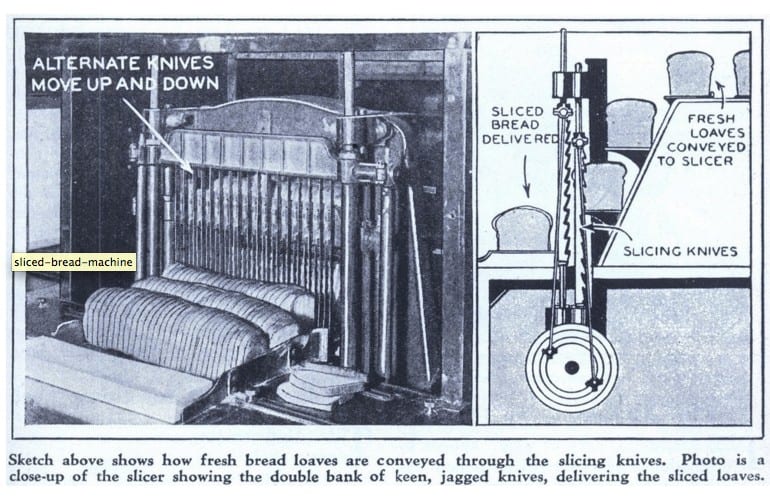In the United States, there is a phrase, “This is the best thing since sliced bread!”. It has been around so long, it’s as if we are referring to the invention of the wheel, even though it’s only been around since 1928. People born in the modern era are so used to seeing sliced bread on the shelves, it’s hard to imagine a time when everyone had to bake and cut their loaves of bread themselves. But in 1943, both the US Government actually tried to ban sliced bread as part of the war effort.

The Invention of sliced bread
Sliced bread is definitely one of those inventions that we take for granted in modern times. Believe it or not, this was not invented by a baker or chef. The idea came from a jeweler named Otto Frederick Rohwedder in St. Joseph, Missouri. Like all great inventors, Rohwedder came up with a solution to a problem. So he would listen to the women coming into his shop. He noticed the ladies were complaining about how tedious it was to slice bread every single day. Since he was a man, this was an issue that he had never taken notice to before. But it was a common problem for housewives to slice the “perfect” slice of bread so that it wasn’t too thick or thin.
Since he had a lot of technical knowledge from creating jewelry out of metal, Otto Frederick Rohwedder realized that he could invent a machine that would slice bread automatically without the hassle of using a knife. In order to make the best machine possible, he polled his future customers. He decided paid for ads in newspapers around the country asking women how thick they liked their sliced bread, and provided an address for them to send him letters. He received over 30,000 responses from women explaining their dilemma. Once he gather all the data, he realized exactly how thick the “perfect” slice of bread should be. He was able to create a machine that would automatically sliced bread, and he filed a patent for the device.

Rohwedder had his first prototype ready to go in the year 1912, but unfortunately, there was a fire that burned down his jewelry shop in 1917. This also destroyed his prototype along with all of his sketches and blueprints for his bread slicing machine. It took him 10 years to recover from the financial blow of losing his store, but he never forgot the brilliant invention that he had come up with. By 1928, he was able to re-create his invention along with a method of automatically putting a waxed paper bag around the sliced bread to keep it fresh. He was able to partner with a local business called the Chillicothe Baking Company. It worked so efficiently that they were able to produce huge quantities of bread.
